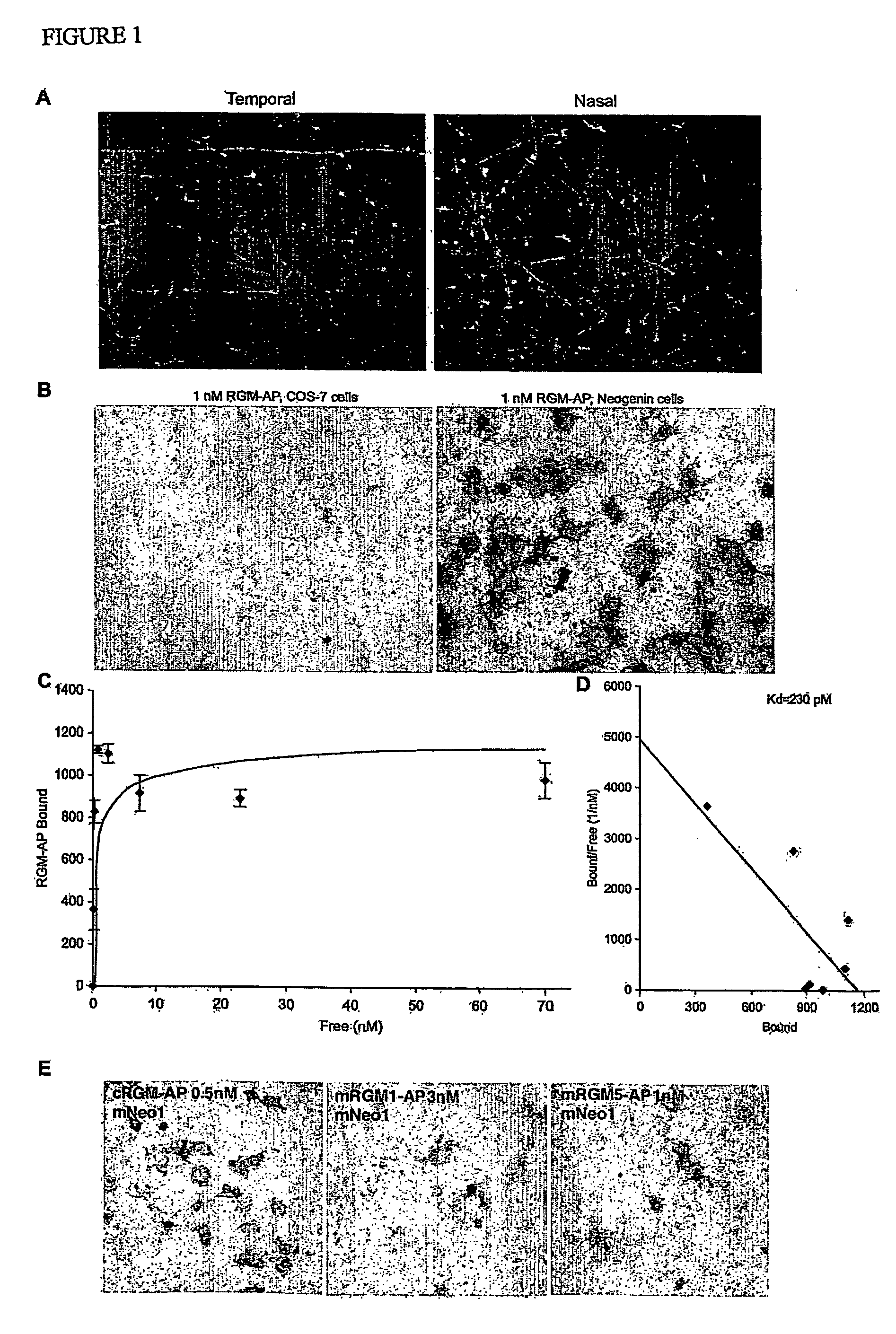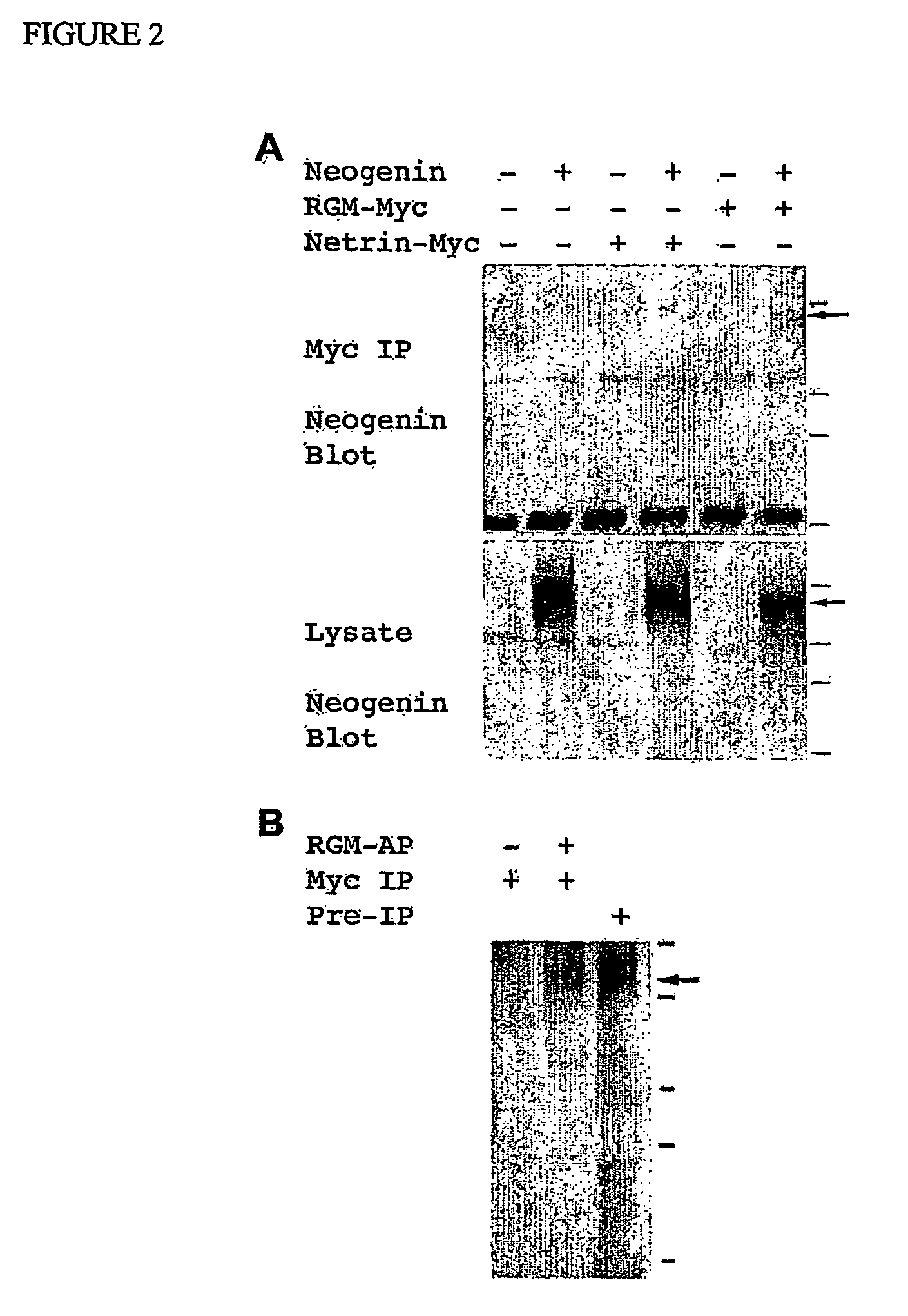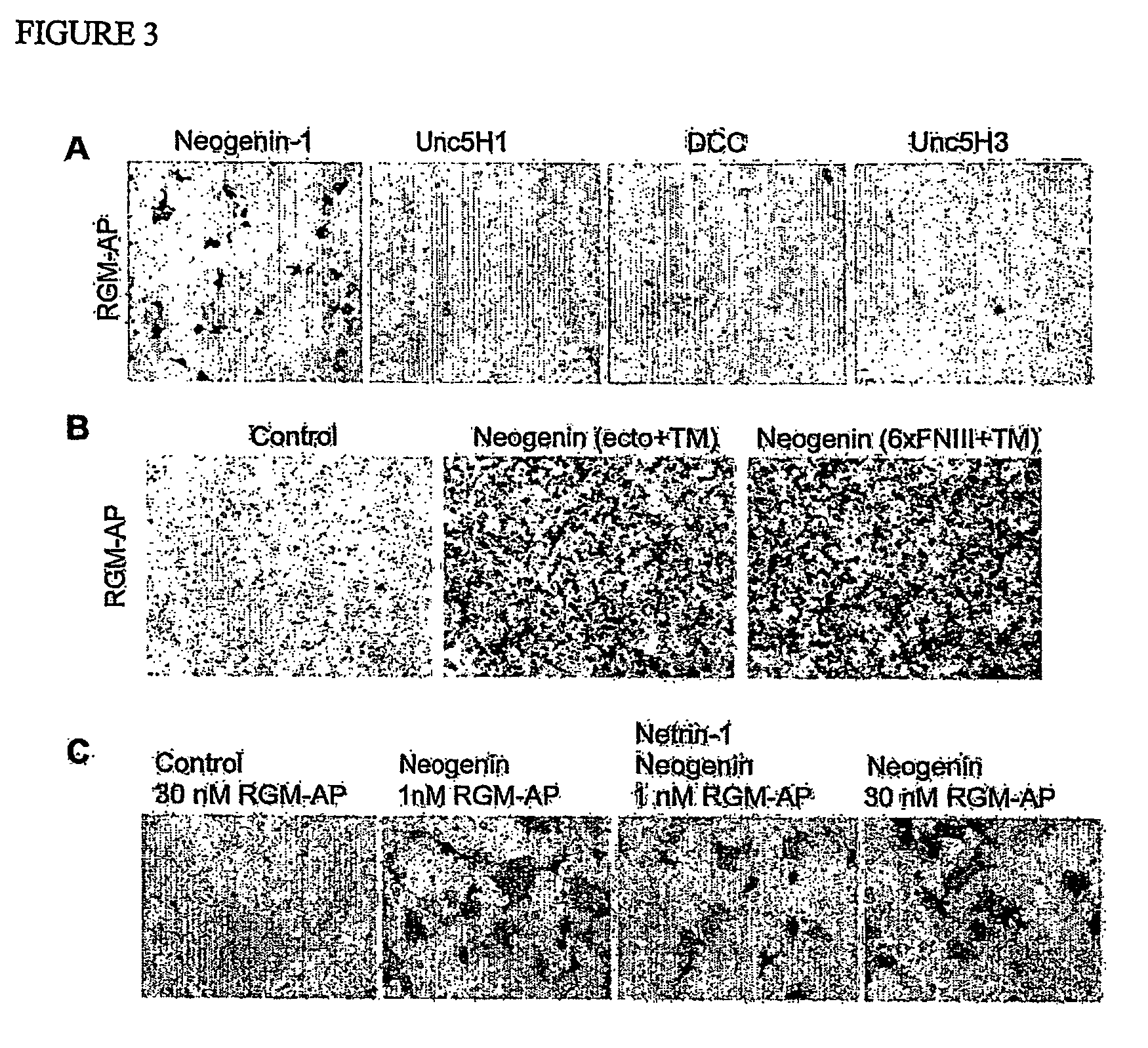Modulators and modulation of the interaction between rgm and neogenin
a technology of neogenin and modulator, applied in the field of neuroscience and neurology, can solve the problems of inability to construct high-throughput and specific pharmaceutical screens for modulators of guidance cues (such as rgm), difficult identification of receptors, and inability to identify receptors precisely, etc., to achieve high-throughput screening, optimize activity, and improve the effect of sensitivity
- Summary
- Abstract
- Description
- Claims
- Application Information
AI Technical Summary
Benefits of technology
Problems solved by technology
Method used
Image
Examples
example 1
[0159] An expression vector containing a vector-derived signal sequence, the chick RGM sequence from aa 28 to 403 fused to AP and a Myc His tag was constructed. This plasmid was stably transfected into HEK293 cells and secreted RGM-AP protein was purified on a Ni-containing resin. Quantitative binding assays to transfected COS-7 cells were conducted as described for Nogo-AP binding13. To isolate a cDNA encoding a chick RGM-AP binding protein, a mouse adult brain cDNA library (Origene) was screened with 10 nM RGM-AP, as described previously for Nogo-66-AP13. Mouse RGM-1-AP (Accession number BC023870) and RGM-2-AP (AK080819) were prepared by identical methods as for chick RGM-AP. Mouse RGM-3 is encoded by BC022603. The mouse Unc5H1 and Unc5H3 expression plasmids were derived from EST clones (BI818609 and BI769500) and the pCMV-SPORT6 vector. Truncated versions of chick Neogenin-1 were expressed using the pcDNA3.1-MycHis vector. The soluble ectodomain protein contains aa residues 1-102...
example 2
[0161] Ligand Screening of Transfected COS Cells.
[0162] I. Prepare the Ligand
[0163] Expression Construct: cDNA encoding the targeted RGM is tagged with the Fc—portion of human IgG and subcloned into a 293 expression vector (pCEP4: In Vitrogen).
[0164] Transfection: 293 EBNA cells are transfected (CaPO.sub.4 method) with the RGM expression construct. After 24 h recovery, transfected cells are selected with G418 (geneticin, 250 ug / ml, Gibco) and hygromycin (200 ug / ml). Once the selection process is complete, cells are maintained in Dulbecco's Modified Eagles medium (DME) / 10% FCS under selection.
[0165] Preparation of Conditioned Medium: Serum-containing media is replaced with Optimem with glutamax-1 (Gibco) and 300 ng / ml heparin (Sigma), and the cells are conditioned for 3 days. The media is collected and spun at 3,000.times.g for 10 minutes. The supernatant is filtered (0.45 um) and stored with 0.1% azide at 4.degree. C. for no more than 2 weeks.
[0166] II. Prepare Truncated Recept...
example 3
[0186] Comparison of axonal guidance phenotypes in Neogenin, DCC, Netrin, and RGM null mice.
[0187] In order to assess the functional role of the RGM / Neogenin system in neurological outcome after brain or spinal cord injury, studies in mice with targeted gene deletions are studied. These mice are created using mouse Embryonic Stem (ES) cells selected to contain disruptions of the endogenous genes of interest. The ES cells with gene disruptions is injected into mouse blastocysts to derive chimeric animals and then the targeted mutation are bred to homozygosity. In mice lacking Neogenin or RGM1 or RGM2 or RGM3 functional protein, various mouse models for human neurological disease are studied. For example, middle cerebral artery occlusion (MCAO) is created in mice using an intraluminal thread by standard methods. This MCAO produces a stroke in the brain and functional deficits in behavior. The recovery of mice from such injury in wild type and gene targeted lines is compared. The RGM / ...
PUM
| Property | Measurement | Unit |
|---|---|---|
| body weight | aaaaa | aaaaa |
| area | aaaaa | aaaaa |
| repulsive guidance | aaaaa | aaaaa |
Abstract
Description
Claims
Application Information
 Login to view more
Login to view more - R&D Engineer
- R&D Manager
- IP Professional
- Industry Leading Data Capabilities
- Powerful AI technology
- Patent DNA Extraction
Browse by: Latest US Patents, China's latest patents, Technical Efficacy Thesaurus, Application Domain, Technology Topic.
© 2024 PatSnap. All rights reserved.Legal|Privacy policy|Modern Slavery Act Transparency Statement|Sitemap



